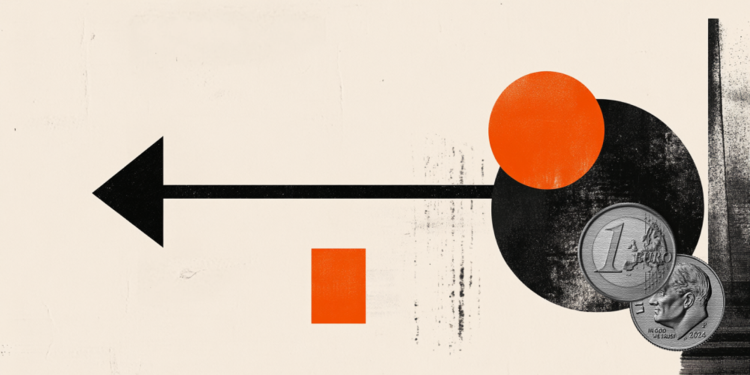- EUR/GBP trims intraday gains following Eurozone and German HCOB PMI data.
- The Eurozone services PMI declined to 52.9 in August, from 53.3 in the previous month.
- The British Pound could appreciate as the BoE is not expected to cut rates in September.
EUR/GBP trimmed its intraday gains following the release of Eurozone and German HCOB Purchasing Managers’ Index (PMI) data, trading around 0.8430 during the European session on Wednesday. The Eurozone Services PMI declined to 52.9 in August, from 53.3 in the previous month. Meanwhile, the Composite PMI fell to 51.0, below expectations and from the previous reading of 51.2, which was expected to remain unchanged.
In Germany, the HCOB services PMI declined to 51.2 in August, slightly below market expectations for it to remain unchanged from the previous reading of 51.4. Meanwhile, the composite PMI also fell to 48.4, just below the previous flash reading of 48.5.
However, the upside potential for the EUR/GBP pair may be limited as the Euro could face challenges amid strong speculation that the European Central Bank (ECB) will cut interest rates in September. This would mark the second interest rate cut by the ECB since it began to shift towards policy normalisation in June. Policymakers remain confident that inflation will gradually return to the bank’s 2% target by 2025.
The EUR/GBP pair could struggle as traders anticipate that the Bank of England (BoE) will not cut rates at the September meeting. However, traders expect a 25 basis points (bps) interest rate cut at the November meeting.
Growing concerns about the global economy have intensified following weak PMI data from the world’s two largest economies. Traders will be closely watching UK PMI data later in the day.
Interest Rates FAQs
Financial institutions charge interest rates on loans to borrowers and pay them out as interest to savers and depositors. These are influenced by base interest rates, which are set by central banks based on economic developments. Central banks are typically mandated to ensure price stability, which in most cases means targeting an underlying inflation rate of around 2%.
If inflation falls below target, the central bank can cut base interest rates, in order to stimulate lending and boost the economy. If inflation rises substantially above 2%, the central bank typically raises base lending rates to try to reduce inflation.
In general, higher interest rates help strengthen a country’s currency by making it a more attractive place for global investors to park their money.
Higher interest rates influence the price of Gold because they increase the opportunity cost of holding Gold rather than investing in an interest-bearing asset or depositing cash in the bank.
If interest rates are high, the price of the US Dollar (USD) usually rises and since Gold is priced in dollars, the price of Gold falls.
The federal funds rate is the overnight rate at which U.S. banks lend to each other. It is the official interest rate typically set by the Federal Reserve at its FOMC meetings. It is set within a range, for example 4.75%-5.00%, although the upper limit (in this case 5.00%) is the figure quoted.
Market expectations for the Federal Reserve funds rate are tracked by the CME’s FedWatch tool, which measures the behavior of many financial markets in anticipation of future Federal Reserve monetary policy decisions.
Source: Fx Street
I am Joshua Winder, a senior-level journalist and editor at World Stock Market. I specialize in covering news related to the stock market and economic trends. With more than 8 years of experience in this field, I have become an expert in financial reporting.







